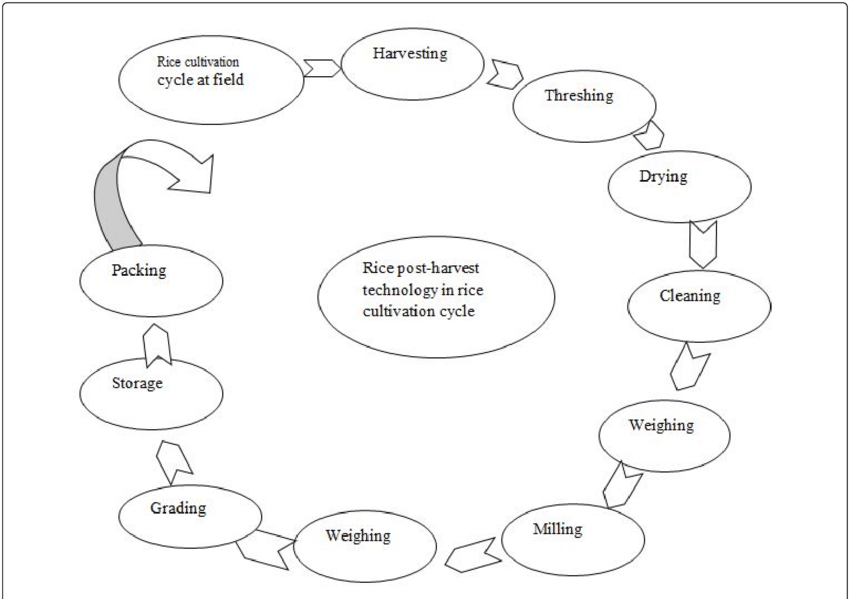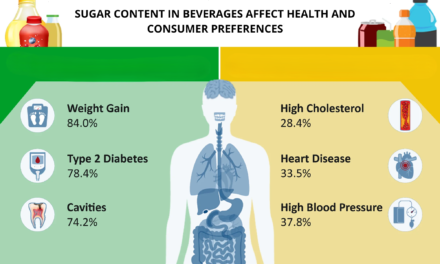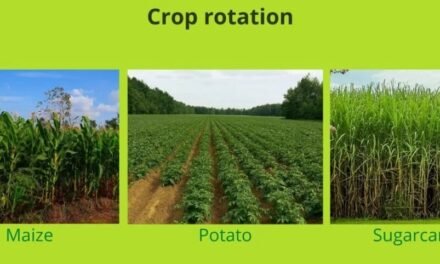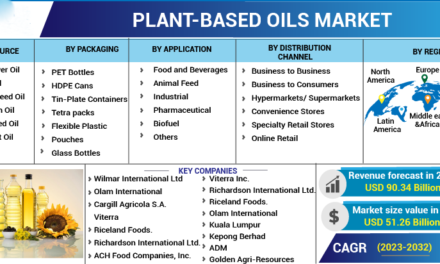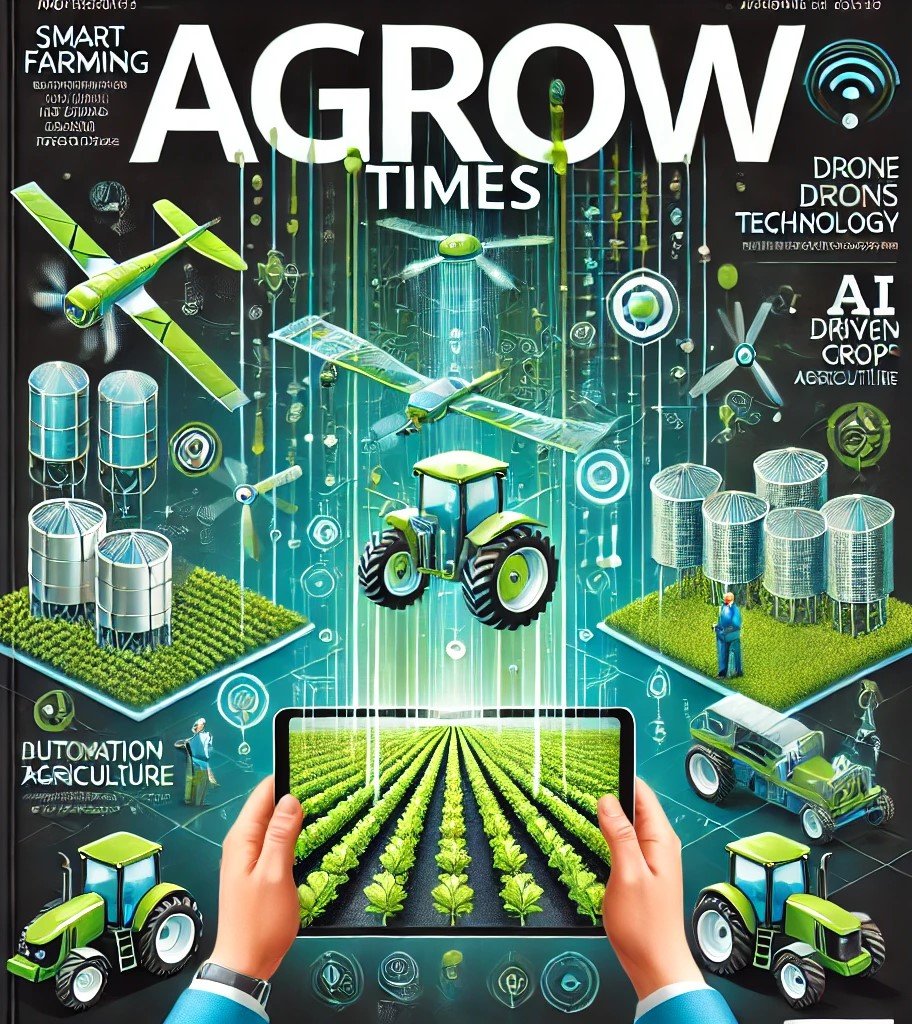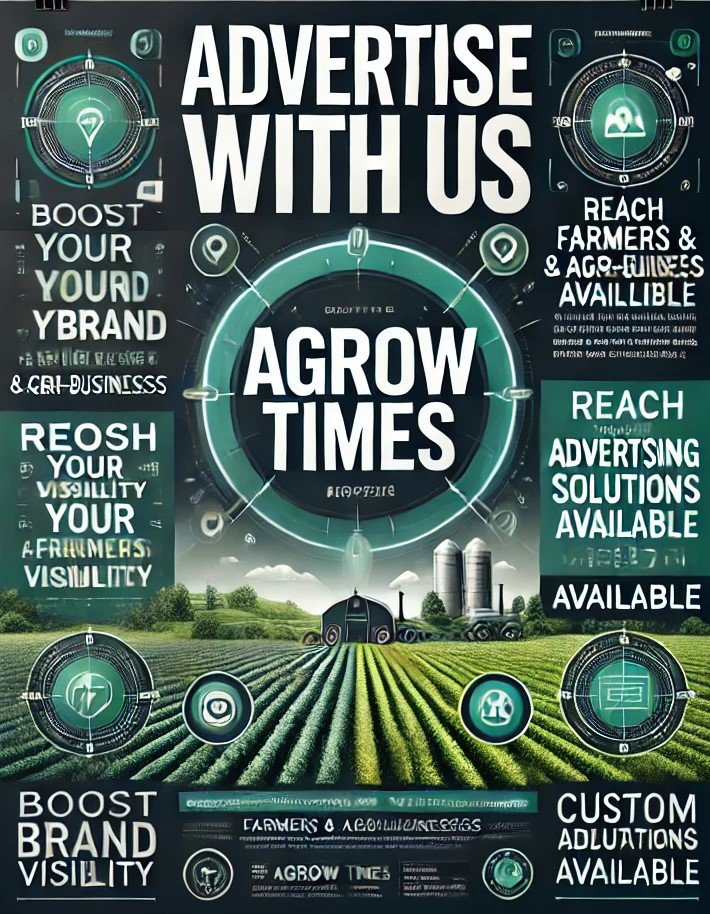Post-harvest processes for rice are crucial for maintaining grain quality, reducing losses, and ensuring the rice reaches consumers in a usable form. These processes can be broadly categorized into the following stages:
1. Harvesting
- Timing: Harvesting is done when rice grains have reached full maturity (20-25% moisture content).
- Methods:
- Manual: Using sickles or knives.
- Mechanical: Using combine harvesters that simultaneously cut, thresh, and clean the grain.
2. Threshing
- Purpose: Separates the grains from the straw.
- Methods:
- Manual beating or trampling.
- Mechanical threshers for efficiency and reduced losses.
3. Cleaning
- Purpose: Removes impurities such as straw, stones, and dust from the threshed grain.
- Methods:
- Manual winnowing.
- Mechanical cleaning using sieves, blowers, or aspiration systems.
4. Drying
- Purpose: Reduces grain moisture content to safe storage levels (12-14%) to prevent spoilage.
- Methods:
- Traditional: Sun drying on mats or concrete floors.
- Mechanical: Using flatbed or batch dryers for uniform drying.
5. Storage
- Purpose: Protects the grain from pests, moisture, and temperature fluctuations.
- Methods:
- Use of airtight containers, silos, or bags with moisture-proof liners.
- Application of pest control measures like fumigation.
6. Milling
Milling transforms paddy into edible rice by removing the husk and bran layers. Key steps include:
- Dehusking/Hulling:
- Removes the husk to produce brown rice.
- Uses rubber roll hullers or traditional wooden hullers.
- Polishing/Whitening:
- Removes the bran layer to produce white rice.
- Performed using abrasive or friction-based machines.
- Grading:
- Sorts rice by size, shape, and quality using mechanical or optical sorters.
7. Parboiling (Optional)
- Purpose: Improves nutritional value, reduces breakage during milling, and enhances shelf life.
- Process:
- Soaking: Paddy is soaked in water.
- Steaming: Steamed to gelatinize the starch.
- Drying: Dried before milling.
8. Packaging
- Purpose: Protects rice during transportation and storage.
- Materials: Jute bags, polypropylene bags, or vacuum-sealed packaging for retail markets.
9. Quality Control
- Purpose: Ensures rice meets consumer and regulatory standards.
- Tests:
- Grain size and shape analysis.
- Moisture content measurement.
- Checking for broken grains, impurities, and uniformity.
10. Distribution
- Rice is transported to local or global markets via trucks, ships, or trains.
- Proper handling during transit ensures minimal damage to grains.
Modern Innovations
- Use of automation and AI-powered sorting for precision grading and impurity removal.
- Adoption of smart storage solutions, such as sensors for real-time monitoring of grain conditions.
- Integrated post-harvest management systems for efficiency and traceability.
Efficient post-harvest processing minimizes losses, improves grain quality, and ensures better returns for farmers and stakeholders in the rice value chain.

